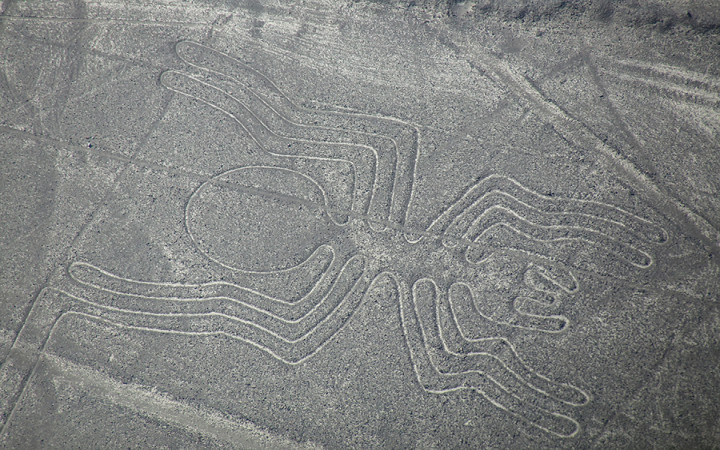Today’s Wonder of the Day was inspired by Liam . Liam Wonders, “What is the purpose of the Nazca lines?” Thanks for WONDERing with us, Liam !
What human achievements amaze you in today’s world? Do you stand in awe of buildings that stretch 100 stories or more into the sky? How about bridges that span miles of water? Today’s world is full of technology. This can make it easy to take such feats for granted.
However, some of the most impressive human achievements happened hundreds—or even thousands—of years ago. One needs to look no further than the Great Pyramids of Egypt. How did they build these monuments without today’s tools? These and other WONDERS boggle the mind.
Another ancient feat can be dated back 2,000 years or more. However, it was largely unknown until humans created the airplane. Let’s take a trip to the coastal plains of Peru. There, we’ll explore the Nazca Lines!
About 250 miles south of Lima, Peru, you’ll find dry desert plains. The region is called the Rio Grande de Nazca river basin. It gets less than one inch of rain each year. This makes it one of the driest places on Earth.
The region is also home to the Nazca Lines. This is a group of huge geoglyphs: lines, shapes, and designs etched into the ground. These markings can really only be viewed from the air due to their size. How large are the Nazca Lines? In total, they cover about 290 square miles. This is why they were nearly unknown until planes began flying over Peru in the 1930s. New lines were found as late as 2019.
Scientists believe the geoglyphs were created by the ancient Nazca culture around 2,000 years ago. The Nazca Lines include a variety of shapes. There are over 800 straight lines, some of which are about 30 miles long. There are also more than 300 geometric designs. This includes triangles, rectangles, trapezoids, spirals, arrows, wavy lines, etc. Finally, the lines include about 70 plants and animals, called biomorphs. There are etchings of a dog, lizard, duck, spider, hummingbird, monkey, whale, llama, cactus, flower, and tree.
How were the Nazca Lines made? Experts think the people who created the lines did so by carefully removing the top 12-15 inches of rust-colored pebbles that line the desert floor. This allowed the layer of lighter-colored sand below to be seen. Considering the scale of the Nazca Lines, this was a monumental feat.
Fortunately, the Nazca Lines have changed very little over the last two centuries. That’s largely thanks to the lack of rain. Additionally, the desert area gets little wind. It suffers almost no erosion. But why were the Nazca Lines created in the first place?
No one knows with any certainty. The Nazca Lines have been studied for more than 80 years. They were named a UNESCO World Heritage Site in 1994. But they still remain largely a mystery. Theories abound, but scientists still don’t know definitively why the Nazca Lines were created.
The first scientists to study the Nazca Lines thought they may have corresponded to important dates or events. They also considered that the lines may have matched up with astronomical phenomena. Others believe they were made by aliens. Later studies have led researchers to think that the geoglyphs may point to places where important rituals were held to pray to ancient gods for rain.
Undoubtedly, people will continue to study the Nazca Lines. Hopefully, experts will learn more about how and why an ancient culture created these lasting marks on the desert floor. They’ll also be the focus of renewed conservation efforts.
There may be little threat to the Nazca Lines from Mother Nature, but human beings are another story. In 2014, members of the group Greenpeace damaged an area near the hummingbird geoglyph during a publicity stunt. Then, in 2018, a truck driver drove over part of the Nazca Lines. They damaged an area about 100 feet by 330 feet. Many people hope these events will lead to stricter security around the lines.
Have you ever seen the Nazca Lines? Would you like to fly over them one day? Maybe you can even help solve the mysteries surrounding them! The Nazca Lines are sure to fascinate human beings for years to come.
Standards: CCRA.L.3, CCRA.L.6, CCRA.R.1, CCRA.R.2, CCRA.R.4, CCRA.R.10, CCRA.SL.1, CCRA.SL.2, CCRA.W.2, CCRA.L.1, CCRA.L.2, NCAS.A.1, NCAS.A.2, NCAS.A.3




